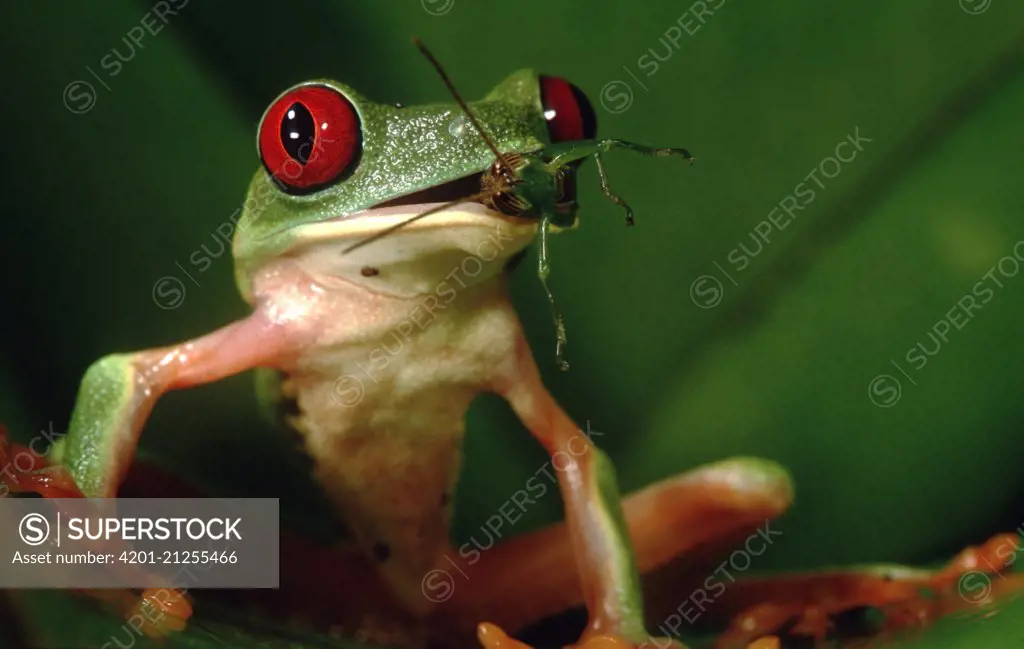
Well, red eyed tree frogs have a diverse diet that primarily consists of small insects such as crickets, flies, and beetles. These frogs are carnivorous and use their long, sticky tongues to catch their prey. They are excellent hunters and can easily snatch insects from the air or foliage with their quick reflexes.
One interesting fact about the diet of red eyed tree frogs is that they are opportunistic feeders. This means that they will eat any small insect that comes their way, making them adaptable to various food sources. They are also known to consume spiders, ants, and even smaller frogs if given the chance.
In addition to their insect diet, red eyed tree frogs also obtain moisture from the environment. They absorb water through their skin, which helps them stay hydrated in the humid rainforest. This adaptation allows them to survive in their natural habitat where water sources may be limited.
Overall, red eyed tree frogs have a varied and carnivorous diet that includes small insects and other potential prey. Their ability to adapt to different food sources makes them resilient and successful predators in the tree canopies of the rainforest.
The Diet of Red Eyed Tree Frogs
Red eyed tree frogs, known for their vibrant green color and large red eyes, have a diverse and interesting diet. These frogs are found primarily in Central America and northern parts of South America, where they inhabit rainforests and other tropical areas.
The diet of red eyed tree frogs consists mainly of insects and small invertebrates. They are opportunistic feeders and will eat a wide variety of prey, including flies, moths, crickets, beetles, and spiders. They will also consume small vertebrates such as tadpoles, small fish, and even other smaller frogs.
Variation in Diet Among Different Life Stages
The diet of red eyed tree frogs can vary depending on their life stage. Juvenile frogs tend to eat smaller prey items such as fruit flies and pinhead crickets, while adults can consume larger insects and invertebrates. This difference in diet is due to the size and hunting abilities of the frogs at different stages of their life cycle.
The Importance of Water for Red Eyed Tree Frog Diet
Water plays a crucial role in the diet of red eyed tree frogs. These frogs require a humid environment and access to water for hunting and reproduction. They rely on water sources such as puddles, plants, and tree cavities to lay their eggs and provide a habitat for their young. Additionally, they will use water to catch their prey by waiting patiently near the edge of ponds or streams and striking at passing insects.
Prey Items Unique to Red Eyed Tree Frogs
Predation and Feeding Strategies of Red Eyed Tree Frogs
Red eyed tree frogs have several feeding strategies to help them catch their prey. Their large eyes are adapted for low-light conditions, allowing them to see and hunt for insects at night. They also have a long, sticky tongue that they use to capture prey by flicking it out and retracting it quickly back into their mouths.
These frogs are ambush predators, meaning they will wait patiently for their prey to come within striking distance before launching themselves at it. They are also able to jump long distances, allowing them to catch flying insects or prey that may be out of reach.
How Often Do Red Eyed Tree Frogs Eat?
Ensuring a Balanced Diet in Captivity
Potential Health Issues Related to Diet
Common Misconceptions About Red Eyed Tree Frog Diet
There are a few common misconceptions about the diet of red eyed tree frogs. One of these misconceptions is that they eat only insects. As mentioned earlier, they also consume smaller vertebrates such as tadpoles and small fish. Another misconception is that they only eat their prey whole. In reality, red eyed tree frogs have small teeth in their upper jaws, which they use to crush and grind their food before swallowing.
Overview of Red Eyed Tree Frogs
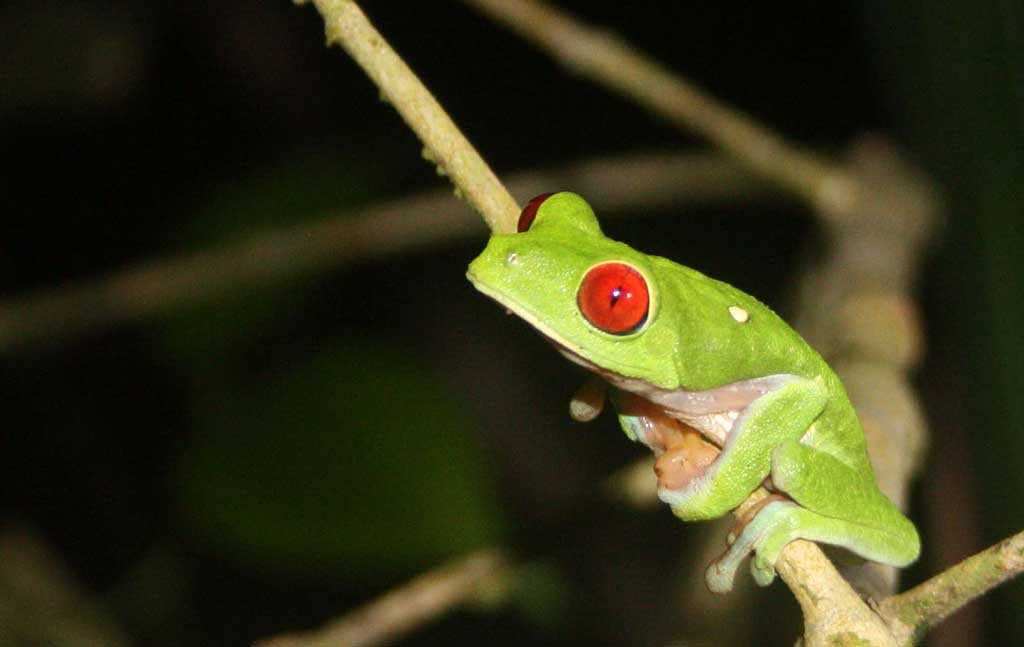
Red-eyed tree frogs are medium-sized frogs, growing up to 2.5 inches in length. Their bright green coloration helps them blend into the lush foliage of their rainforest habitats, providing camouflage during the day. However, when threatened, they can quickly change their color to reveal their bright blue and yellow flanks, startling predators and giving them a chance to escape.
Natural Habitat of Red Eyed Tree Frogs
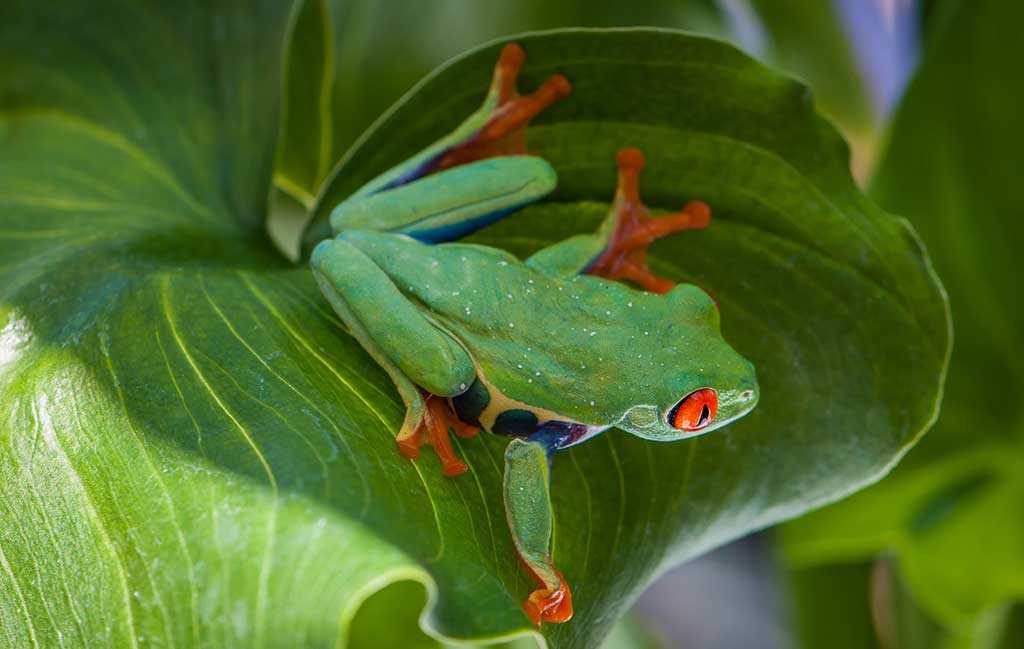
Red-eyed tree frogs are primarily found in the lowland rainforests of Central America, including countries like Costa Rica, Panama, Nicaragua, and Honduras. These rainforests provide the ideal environment for the survival of these frogs, with their high humidity levels, abundant rainfall, and diverse vegetation.
These frogs are arboreal, meaning they spend the majority of their lives in trees. They have specialized adaptations that enable them to climb and hold onto vegetation, such as large, sticky toe pads and long, flexible digits. This allows them to navigate through the dense rainforest canopy and find suitable perches for resting and hunting.
Characteristics of Red Eyed Tree Frogs
These frogs have a slender body shape and long limbs, which aid in their arboreal lifestyle. They have a sticky tongue that can extend rapidly to catch insects and other small prey. Their skin is smooth and moist, helping them stay hydrated in their humid rainforest environment.
One interesting behavior of red-eyed tree frogs is their ability to call out to potential mates. They produce a loud, distinct call that resembles a high-pitched bark, which can be heard from a considerable distance. Males often call in chorus, forming a chorus of nighttime sounds in the rainforest.
What Do Red Eyed Tree Frogs Eat?
Red-eyed tree frogs are insectivores, meaning they primarily feed on insects and other small invertebrates. Their diet consists of a variety of prey items, including crickets, flies, grasshoppers, moths, beetles, and spiders. Because they are primarily nocturnal, they are most active and feed during the night, when their prey is also abundant.
To catch their prey, red-eyed tree frogs use their long, sticky tongue, which they project outwards to snatch insects from the air or off nearby surfaces. They are skilled hunters, using their excellent eyesight and quick reflexes to effectively capture their prey. Their specialized toe pads and strong limbs also allow them to move swiftly and navigate their arboreal environment in search of food.
Natural Habitat of Red Eyed Tree Frogs
Red eyed tree frogs, known for their vibrant colors and iconic red eyes, are native to the tropical rainforests of Central and South America. These unique amphibians can be found in countries such as Costa Rica, Panama, Nicaragua, and Colombia. They are primarily arboreal, meaning they spend most of their time in trees and vegetation.
Forest Canopies and Water Sources
The natural habitat of red eyed tree frogs consists of dense foliage and trees with broad leaves, providing them with ample hiding spots and protection from predators. They are commonly found in the upper levels of the forest canopy, where they can easily catch prey and stay safe from ground-dwelling predators.
Water sources are crucial for the survival of red eyed tree frogs. They require access to shallow pools, ponds, and slow-moving streams for breeding and egg-laying. These bodies of water also serve as a crucial water source for the frogs. Red eyed tree frogs have specialized toe pads that allow them to cling to wet surfaces, making it easier for them to navigate their watery environment.
Ambient Temperature and Humidity
Due to their tropical habitat, red eyed tree frogs thrive in warm and humid conditions. They require a constant temperature range of 75 to 85 degrees Fahrenheit (24 to 29 degrees Celsius) to maintain their metabolic functions. Humidity levels should be kept around 60 to 80 percent to replicate their natural environment.
Diversity of Plant Life
The red eyed tree frogs’ natural habitat is a complex ecosystem that supports their unique lifestyle and diet. Replicating these conditions in captivity is essential to ensure their health and well-being.
Characteristics of Red Eyed Tree Frogs
One of the most notable characteristics of red-eyed tree frogs is their ability to change color. During the day, they typically appear bright green, which helps them blend in with the surrounding foliage. However, when they feel threatened or are in a state of arousal, their color can change to a vibrant blue or yellow. This ability to change color is not only a form of camouflage but also serves as a way to communicate with other frogs.
Their long, slender bodies and well-developed muscles allow them to leap and jump with great agility. Red-eyed tree frogs are exceptional jumpers and can easily cover a distance of several feet in a single leap. These impressive jumping abilities help them catch prey and escape from predators.
Another interesting characteristic of red-eyed tree frogs is their nocturnal behavior. They are primarily active during the night, when they hunt for food. Their large, bulging red eyes are particularly adapted to low light conditions, allowing them to see and locate prey in the darkness.
Red-eyed tree frogs have a unique respiratory system that allows them to breathe both through their lungs and their skin. This respiratory adaptation enables them to absorb oxygen from the air and from surrounding water, making them well-suited for their semi-aquatic lifestyle. They can often be found near streams, ponds, and other bodies of water.
What Do Red Eyed Tree Frogs Eat in the Wild?
Insects and Small Invertebrates as a Primary Food Source
Red eyed tree frogs are carnivorous creatures that rely on a diet of insects and small invertebrates. They are nocturnal hunters, which means they primarily feed during the night.
These tree frogs have a specialized tongue that extends rapidly to catch prey, such as flies, moths, crickets, grasshoppers, and beetles. They are agile and skilled hunters, using their camouflage and jumping abilities to ambush insects.
Their large, red eyes play an important role in their feeding strategy. These eyes are used to locate and track prey, especially at night when their vision is most effective. The red coloration of their eyes also provides them with excellent camouflage during the day.
Variation in Diet Among Different Life Stages
Once they reach adulthood, red eyed tree frogs rely heavily on a diet of insects. However, the specific prey items they consume may vary depending on their habitat and availability of food sources.
The Importance of Water for Red Eyed Tree Frog Diet
Water is crucial for the diet of red eyed tree frogs. They require a moist environment, as it aids in the digestion of their food and overall hydration. These tree frogs often obtain water by absorbing moisture through their skin or by directly ingesting water droplets.
Their diet is closely linked to the availability of water sources in their natural habitat. During periods of drought or low rainfall, the abundance of insects may decrease, impacting the diet and survival of red eyed tree frogs.
- Prey Items Unique to Red Eyed Tree Frogs
These additional prey items are usually consumed when the opportunity arises and may not be a significant part of their regular diet. However, they showcase the versatility and adaptability of red eyed tree frogs as hunters and foragers.
Insects and Small Invertebrates as a Primary Food Source
Red eyed tree frogs are opportunistic feeders, meaning they will eat whatever prey is available to them. They are not picky eaters and will consume a wide range of insects and small invertebrates. This flexibility in diet ensures that they can find food in their natural habitat, even when certain prey items are scarce.
These frogs are most active during the night, which is when they do most of their hunting and feeding. They are skilled climbers and can easily navigate through the branches and leaves of trees to find their prey. Their bright green coloration helps them blend in with the foliage, making them excellent ambush predators.
Overall, the diet of red eyed tree frogs in the wild consists of a diverse range of insects and small invertebrates, which they hunt and catch using their specialized adaptations and keen senses. This diet provides them with the necessary nutrients and energy to survive and reproduce in their natural habitat.
Variation in Diet Among Different Life Stages of Red-Eyed Tree Frogs
Like most amphibians, red-eyed tree frogs start their lives as tadpoles. Tadpoles are aquatic and primarily feed on algae and plant matter found in their environment. They have specialized mouthparts that allow them to scrape and filter small particles from the water. As tadpoles grow, their diet gradually shifts towards a more carnivorous one.
Once they metamorphose into frogs, red-eyed tree frogs become primarily insectivorous. They rely on a diet of small invertebrates, such as crickets, flies, and ants. These frogs have a sticky tongue that they use to catch their prey with lightning-fast strikes. Red-eyed tree frogs are excellent hunters and have adapted to catch flying insects that are abundant in their rainforest habitat.
Interestingly, the diet of red-eyed tree frogs can change depending on their life stage and environment. Adult frogs have been observed eating a wider variety of prey items compared to their younger counterparts. This may be due to the availability of different food sources in their habitat.
| Life Stage | Primary Diet |
|---|---|
| Tadpole | Algae and plant matter |
| Froglet | Small invertebrates |
| Adult Frog | Various small invertebrates |
The Importance of Water for Red Eyed Tree Frog Diet
The red eyed tree frogs have evolved to be highly adapted to their moist habitat, which includes rainforests and cloud forests. They have developed specialized skin that helps them absorb water and maintain hydration. This is particularly important for their ability to digest their prey effectively.
Water also plays a crucial role in the reproduction of red eyed tree frogs. The females lay their eggs on leaves close to water sources, such as ponds or streams. The tadpoles that hatch from these eggs are aquatic and rely on water for their survival. They feed on organic matter found in the water, including algae and small invertebrates.
Obtaining Water in the Wild
In their natural habitat, red eyed tree frogs obtain water from various sources. They absorb moisture directly through their skin by sitting on wet leaves or surfaces. They may also drink droplets of water that collect on leaves or swallow water while hunting for prey.
Water in Captivity
Prey Items Unique to Red Eyed Tree Frogs
Red eyed tree frogs have a diverse diet that consists of a variety of prey items. While they primarily feed on insects and small invertebrates like most tree frogs, there are some prey items that are unique to red eyed tree frogs.
1. Moths and Butterflies
One unique prey item for red eyed tree frogs is moths and butterflies. These insects are attracted to the bright colors of the frogs and often find themselves within striking distance of the frog’s sticky tongue. The frogs are able to catch and consume these flying insects, making them an important part of their diet.
2. Spiders
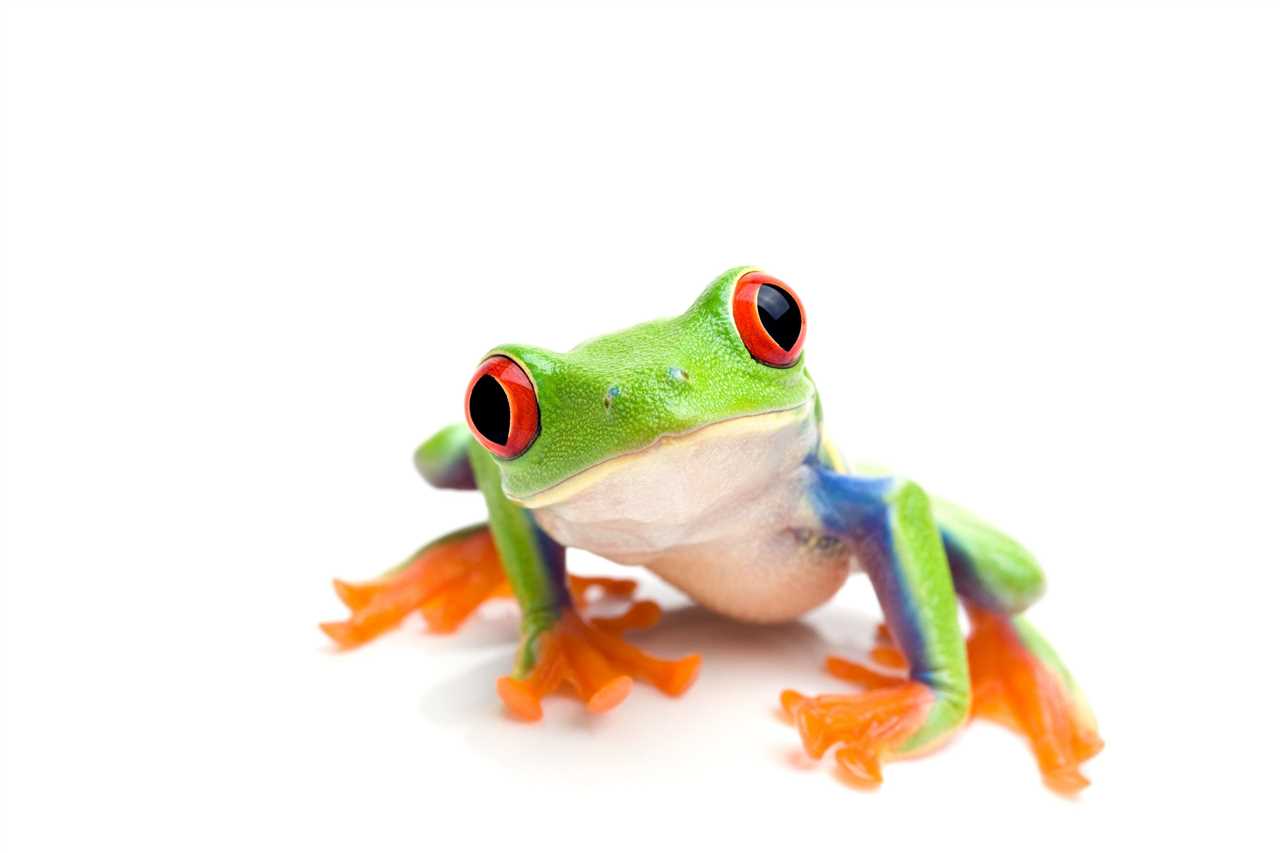
Red eyed tree frogs also prey on spiders, including small and medium-sized species. They are adept at climbing and can catch spiders that are crawling on leaves or branches. The frogs use their long, sticky tongues to capture the spiders, which they then swallow whole.
3. Ants and Termites
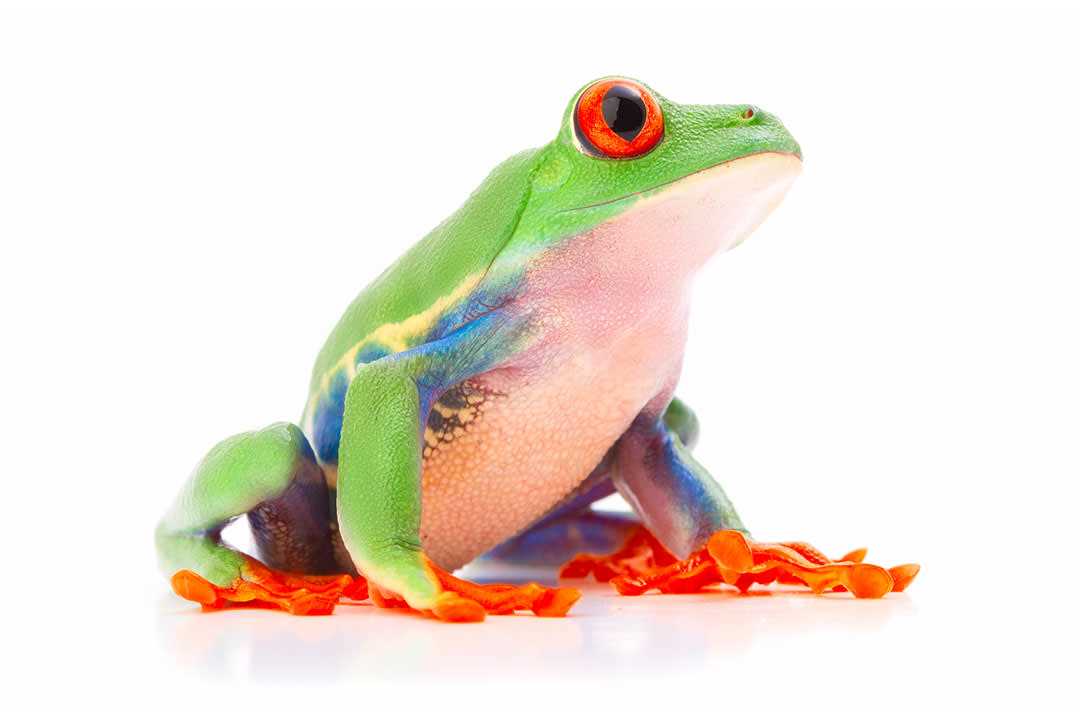
Another unique prey item for red eyed tree frogs is ants and termites. These small insects are a rich source of protein and are readily available for the frogs to consume. The frogs can easily catch and consume multiple ants or termites in a single feeding session.
In addition to these unique prey items, red eyed tree frogs also feed on a variety of other insects such as crickets, grasshoppers, beetles, and flies. They are opportunistic feeders and will consume any small, moving prey item that comes within their reach.
Predation and Feeding Strategies of Red Eyed Tree Frogs
While red eyed tree frogs primarily eat insects and small invertebrates, they have an interesting feeding strategy. Rather than actively hunting for prey, red eyed tree frogs prefer to ambush their food. They perch on leaves or other vegetation and wait for unsuspecting insects to come within range. Once a suitable meal is in striking distance, the frog uses its long, sticky tongue to capture and consume its prey.
This predation strategy requires the red eyed tree frog to be patient and perceptive. They must carefully choose their position and wait for the perfect opportunity to strike. This behavior is an adaptation to their arboreal lifestyle, where they spend most of their time in the trees and rely on camouflage to avoid detection.
Camouflaging for Effective Hunting
Red eyed tree frogs have developed excellent camouflage techniques to blend in with their surroundings. Their bright green color and blue and yellow markings help them camouflage among the leaves and vegetation of the rainforest canopy. By blending in, they can remain hidden from potential predators and prey, increasing their chances of a successful ambush.
In addition to their camouflage, red eyed tree frogs have unique suction cup-like toe pads that allow them to cling to smooth surfaces, such as leaves and branches. This adaptation enables them to stay in position for long periods without falling or losing their grip. Their specialized toe pads also help them move silently and stealthily when stalking prey.
Overall, the predation and feeding strategies of red eyed tree frogs are well-suited to their natural habitat and lifestyle. By employing aposematism, camouflage, and ambush techniques, they are able to survive and thrive in the trees of the rainforest canopy.
How Often Do Red Eyed Tree Frogs Eat?
Due to their high metabolic rate, red eyed tree frogs have to constantly replenish their energy levels by consuming food. They have been observed to feed as often as every few hours, especially during breeding seasons or periods of high activity. This frequent feeding helps them maintain their energy levels and allows them to carry out their daily activities, such as climbing, hunting, and defending territory.
Dietary needs and considerations
Ensuring a Balanced Diet in Captivity
In addition to insects, it is also crucial to offer a variety of supplements to ensure that the red-eyed tree frogs receive all the necessary nutrients. Calcium and vitamin D3 supplements are particularly important to prevent metabolic bone disease, which is a common health issue in captive frogs.
Feeding frequency is another important aspect of maintaining a balanced diet for red-eyed tree frogs. Juvenile frogs should be fed daily, while adult frogs can be fed every other day. It is essential to monitor their weight and adjust the feeding schedule accordingly to prevent obesity or malnourishment.
Water is also an important component of the red-eyed tree frog diet. These frogs require a humid environment, and providing a shallow water dish or misting their enclosure regularly can help maintain their hydration levels. Some red-eyed tree frogs may also drink water droplets from leaves or other surfaces.
Overall, providing a balanced and varied diet for red-eyed tree frogs is crucial for their health and well-being in captivity. By replicating their natural diet, offering supplements, and maintaining proper hydration, owners can ensure that their red-eyed tree frogs thrive and live a long and healthy life.
Potential Health Issues Related to Red Eyed Tree Frog Diet
The diet of red eyed tree frogs plays a crucial role in their overall health and well-being. While these frogs are generally hardy and adaptable, improper feeding can lead to various health issues.
1. Vitamin and Mineral Deficiencies:
A lack of essential vitamins and minerals in their diet can result in various health problems for red eyed tree frogs. Calcium deficiency, for example, can lead to metabolic bone disease, causing weak and brittle bones. Vitamin A deficiency can weaken their immune system, making them more prone to infections.
2. Malnutrition:
3. Obesity:
Overfeeding red eyed tree frogs can lead to obesity, which can have detrimental effects on their health. Obesity can make them less agile and increase the risk of joint problems. It can also put them at greater risk for various diseases and shorten their lifespan.
4. Gastrointestinal Issues:
Improper diet, such as feeding inappropriate or contaminated food, can result in gastrointestinal problems for red eyed tree frogs. This can include digestive issues, such as bloating, diarrhea, or constipation, which can affect their overall health and well-being.
5. Parasitic Infections:
6. Stress and Poor Immune System:
A poor diet can weaken the immune system of red eyed tree frogs, making them more susceptible to stress and infections. This can compromise their overall health and make it harder for them to fight off diseases.
Conclusion:
Providing a proper and balanced diet is essential for maintaining the health and well-being of red-eyed tree frogs. Careful attention should be given to their nutritional needs to prevent potential health issues and ensure a long and thriving life for these unique amphibians.
Common Misconceptions About Red Eyed Tree Frog Diet
Misconception 1: Red Eyed Tree Frogs Eat Only Insects
While it is true that insects make up a significant portion of the red eyed tree frog’s diet, they are not the sole source of nutrition for these amphibians. In addition to insects, red eyed tree frogs also consume small invertebrates such as spiders, snails, and other arthropods. These small invertebrates provide important nutrients and variety in their diet.
Misconception 2: Red Eyed Tree Frogs Need a Constant Supply of Live Prey
Contrary to popular belief, red eyed tree frogs do not require a constant supply of live prey in their diet. While live insects are a preferred food source for these frogs, they can also be fed a variety of commercially available insect supplements, such as gut-loaded crickets and mealworms. These supplements ensure that the frogs receive a balanced diet even when live prey is not readily available.
Misconception 3: Red Eyed Tree Frogs Can Only Eat Insects of a Specific Size
Red eyed tree frogs are capable of eating insects of various sizes, contrary to the misconception that they can only consume small insects. In the wild, these frogs have been observed consuming larger insects such as grasshoppers and moths. This flexibility in their diet allows them to adapt to different food sources available in their natural habitat.

I’m Lena Adams—a product of an unconventional upbringing in the African wilderness. My father, a daring explorer of African wildlife, sparked my fascination with reptiles, a passion that intertwined with the tragic loss of my mother during an expedition, leaving an indelible mark on my life. Driven to understand the creatures that captivated my parents, I embarked on my journey, sharing insights about reptiles, frogs, and lizards on my website. Through my explorations and conservation efforts, I honour my family’s legacy while seeking connections—to the creatures, nature, and the mother whose presence I yearn to understand.
